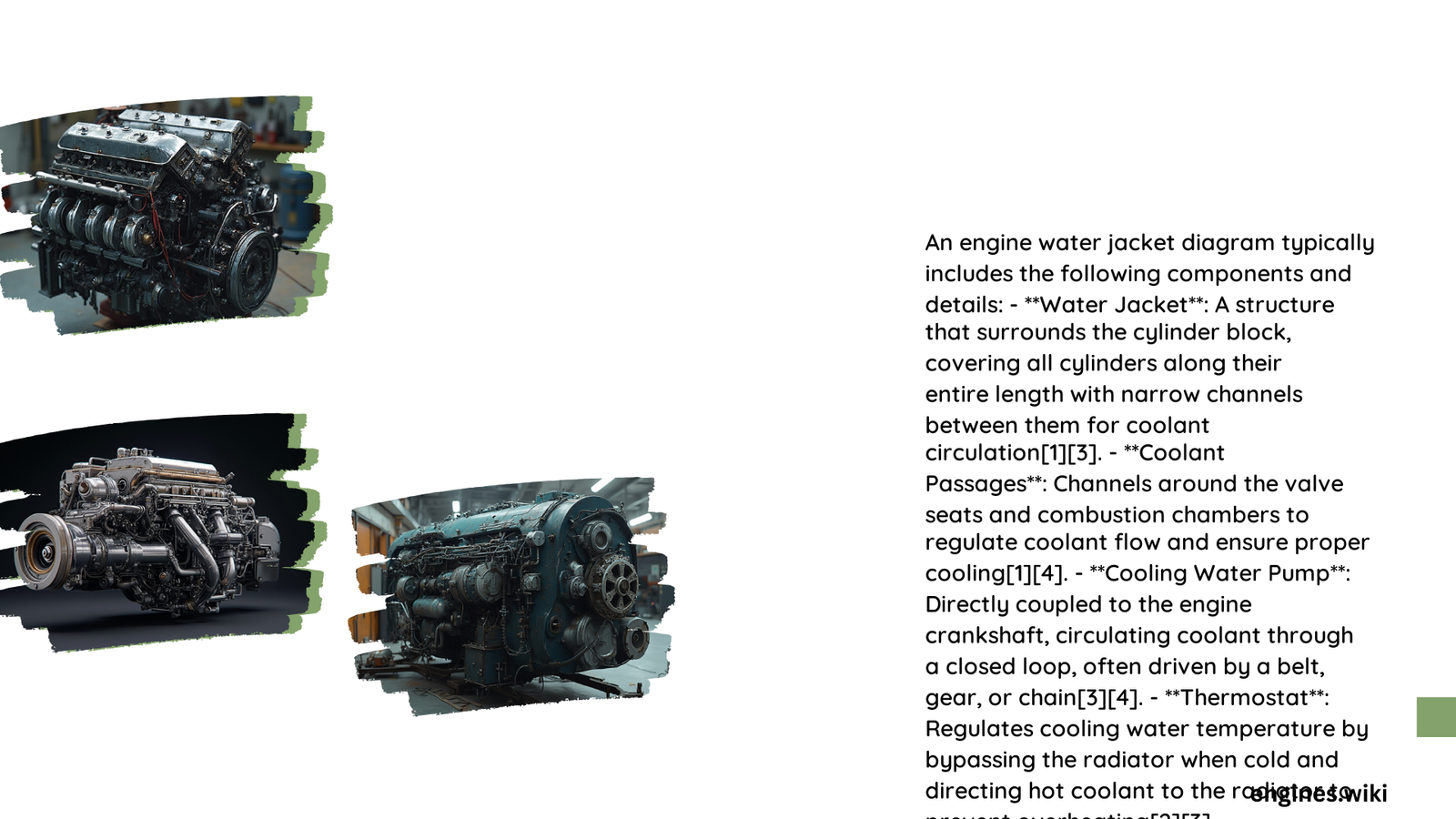An engine water jacket diagram represents a critical thermal management system within internal combustion engines, strategically designed to circulate coolant around high-temperature engine components, preventing overheating and maintaining optimal operational temperatures through precise fluid channeling and heat dissipation mechanisms.
What Is an Engine Water Jacket?
The engine water jacket is a sophisticated cooling infrastructure integrated within the engine block, creating intricate passageways surrounding cylinders, valve seats, and critical thermal zones. Its primary function involves managing heat transfer and maintaining consistent engine temperature through strategic coolant circulation.
How Does Water Jacket Design Impact Engine Performance?
Thermal Management Principles
- Heat Absorption: Coolant channels absorb excess thermal energy
- Temperature Regulation: Maintains consistent operational temperatures
- Material Considerations: Typically constructed from cast iron or aluminum
| Component | Material | Thermal Conductivity | Typical Wall Thickness |
|---|---|---|---|
| Water Jacket | Cast Iron | 52 W/mK | 3-6 mm |
| Water Jacket | Aluminum | 205 W/mK | 3-5 mm |
What Are the Critical Design Elements?
Coolant Circulation Pathways
- Entry Points: Lower radiator tank connections
- Circulation Routes: Around cylinders and valve seats
- Exit Mechanisms: Connected to radiator heat exchangers
Why Is Precise Water Jacket Design Essential?
Performance Implications
- Prevents engine component thermal stress
- Reduces potential for mechanical failure
- Optimizes overall engine efficiency
What Challenges Exist in Water Jacket Engineering?
Technical Considerations
- Bore Distortion: Potential thermal expansion issues
- Corrosion Management: Requires specialized inhibitor treatments
- Flow Dynamics: Complex fluid movement patterns
How Do Modern Engines Innovate Water Jacket Technologies?
Advanced Design Strategies
- Computational Fluid Dynamics (CFD) modeling
- Additive Manufacturing techniques
- Microstructural Optimization
What Maintenance Practices Ensure Water Jacket Longevity?
Recommended Protocols
- Regular coolant replacement
- Periodic system pressure testing
- Corrosion inhibitor monitoring
Conclusion: Engineering Precision
The engine water jacket diagram represents a pinnacle of thermal engineering, balancing complex heat transfer principles with mechanical durability. Continuous technological advancements promise increasingly sophisticated cooling system designs.

